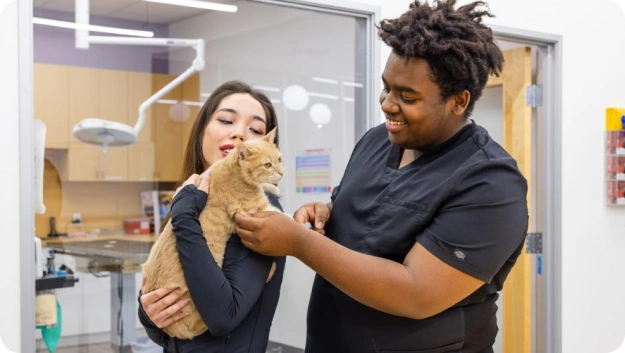Symptoms of Kitten Eye Infection
Kitten eye infections are a common issue that many pet owners encounter, especially those with kittens from shelters or community cat colonies. These infections can be caused by various factors, including viruses, bacteria, and even traumas.
They can present with a variety of symptoms including:
- Redness and swelling: The white of the eye may appear red, and the eyelids might be swollen.
- Discharge: You might notice a watery, clear, yellow, or green discharge from the eye.
- Squinting and blinking: Your kitten may squint or blink excessively, or even keep one eye closed.
- Cloudy or glassy eyes: The eyes might look cloudy or have a glassy appearance.
- Pawing at the eye: Your kitten might paw at its eye or face, or rub it on surfaces.
- Sneezing and nasal discharge: Sometimes, eye infections are accompanied by upper respiratory symptoms.
Home Treatment for Kitten Eye Infection
In mild cases, you can manage a kitten eye infection at home. Here are some steps you can take:
- Clean the eyes: Use a clean cotton ball moistened with warm water to gently wipe away any discharge from the eye. Be sure to wipe from the inner corner to the outer corner to avoid reinfection.
- Warm compress: Apply a warm, damp cloth to the eye for a few minutes to help reduce swelling and discomfort.
- Saline solution: Use a saline solution (mildly salty water) to clean the eye. This can help remove any debris and keep the eye clean.
- Keep the eye open: In some cases, simply keeping the eye open and clean can help the infection clear up.
When to Contact Your Veterinarian About A Kitten Eye Infection
While home care can be effective for mild cases, there are situations where you should seek veterinary care:
- Severe symptoms: If your kitten’s eye is very swollen, has a lot of discharge, or is extremely red, it’s best to consult a vet.
- Pain and discomfort: If your kitten seems to be in pain, is pawing at its eye excessively, or is avoiding light, it’s time to see a professional.
- No improvement: If the infection doesn’t improve with home treatment within a few days, it’s important to get a vet’s opinion.
- Other symptoms: If your kitten is showing other signs of illness, such as lethargy, loss of appetite, or nasal discharge, it’s best to have a vet check for underlying issues.
Conclusion
Kitten eye infections can be uncomfortable and even painful for your furry friend, but with the right care, they can be managed effectively. By recognizing the symptoms early and knowing when to seek professional help, you can ensure your kitten gets the best possible care. If you have any concerns about your kitten’s eye health, don’t hesitate to contact your local veterinarian in Austin, TX.
For more detailed information, you can refer to authoritative sources such as The Kitten Lady and The Spruce Pets.
Remember, your kitten’s health and comfort are our top priorities. If you have any questions or need further assistance, feel free to reach out to our vet clinic in Austin. We’re here to help!




